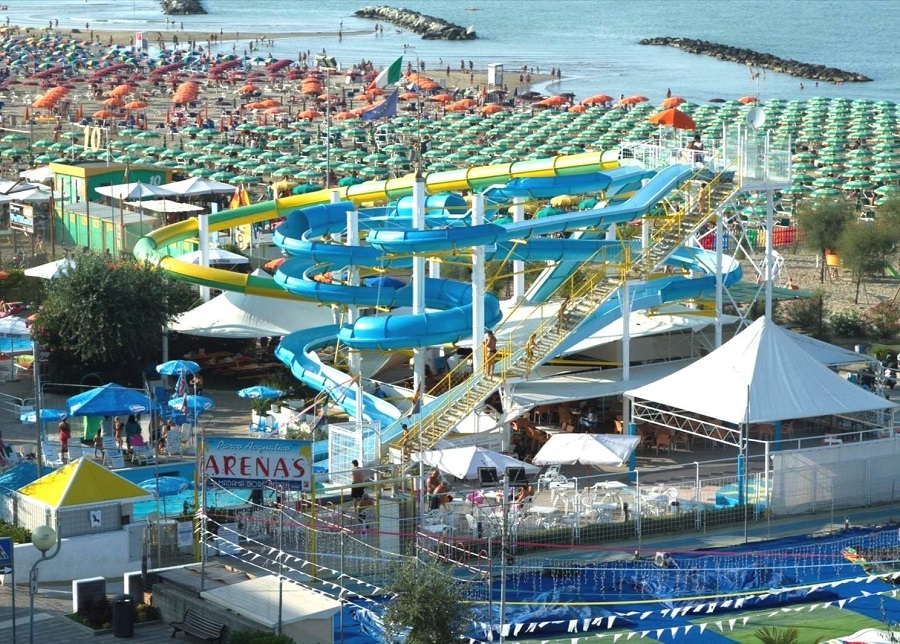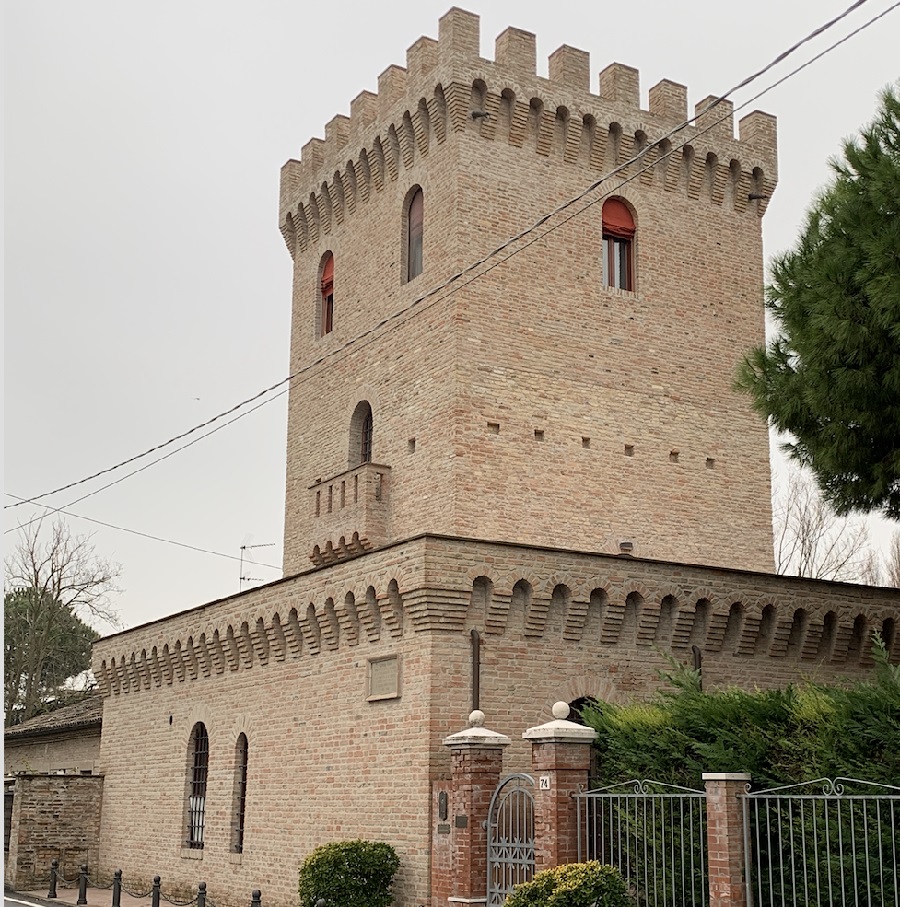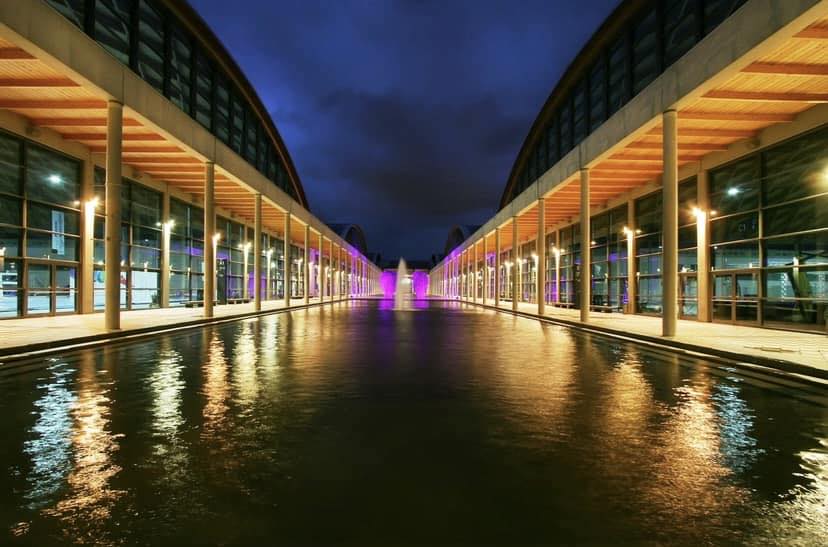With its fine golden sand, and over 16 kilometres of length, Rimini’s beach forms a wide gulf, making it possible to admire the whole Romagna riviera, from Ravenna to the San Bartolo promontory in the Marche region.
Stretching along the Adriatic Sea shore, the city of Rimini is divided into various districts. Each has its own identity and touristic offer, with a variety of accommodation and hospitality facilities, including hotels, restaurants, bars, clubs, and attractions. Whether you’re planning a family holiday with your children, a relaxing retreat, an exciting sports holiday, or you’re a young adult looking for a fun trip, contact us to receive a tailored proposal!
Let’s explore the northern Rimini districts, starting from the Rimini canal port.

San Giuliano mare
San Giuliano mare, next to Borgo San Giuliano in the historic centre, is the first district you’ll come across. Formerly known as “barafonda”, it was the place where the fishermen of San Giuliano launched their boats into the sea and pulled them aground.
Today, San Giuliano Mare hosts the elegant Marina di Rimini Dock, one of the most beautiful and modern marinas in the entire Mediterranean, with 680 boat berths. If you plan on visiting the Rimini Dock, we suggest taking a walk on the elevated 1300-meter-long promenade, which runs along the quays where luxury yachts and large sailing boats dock.
If you’re looking forward to spending a romantic evening, enjoy one of the most beautiful sunsets the coast has to offer from the Rimini Dock while dining in one of the many restaurants in the area!
San Giuliano Mare also features beautiful, family-friendly beach establishments with entertainment services, as well as a wide selection of excellent restaurants, both on the beach and along the promenade. In “piazzetta della Balena” (“Balena square”), next to the small pier of San Giuliano Mare, you’ll find a large cetacean-shaped fountain, built after the stranding of a sperm whale in 1943.
The San Giuliano Mare pier is also the starting point of the Artists’ Promenade, a riverside promenade ideal for strolls and bike rides. The murals you’ll find along the promenade and the stilts left by the fishermen will guide you through the history of this neighbourhood.

Rivabella
Moving further towards northern Rimini, after San Giuliano, you’ll reach the peaceful seaside district of Rivabella. Thanks to the cliffs overlooking the fine sandy beach, the sea level is shallow, ensuring a safe bathing experience for children, and making Rivabella an ideal destination for family vacations.
Rivabella’s beach staff will be enthusiastic to help you unwind: while children run around and play, grown-ups can relax and have a delicious meal, without leaving the beach.
Youngsters will love Rimini Acquascivoli, a huge seaside water park featuring 4 slides, each with its own speed, as well as pools, umbrellas and sunbeds, and a bar restaurant that can be rented for birthday parties.
Rivabella also caters to sport enthusiasts, with options for all ages. You’ll find tennis, futsal, baseball and softball courts, both on the beach and nearby the seashore.

Viserba
Heading north from Rivabella, you’ll reach Viserba, one of the largest and most popular northern Rimini districts. Breakwater barriers cause the sea to be shallow, making the three kilometres long beach ideal for children. Thanks to its wide offer of family hotels, Viserba is popular among those who are looking for a relaxing holiday.
In the late XIX century, Viserba established itself as a seaside district, thanks to the increasing popularity of thalassotherapy. At that time, a number of liberty style villas were built to accommodate the emerging wealthy middle class along Rimini’s shoreline; villas that can still be admired to this day.
Discover these fascinating villas with the “Viserba: una sorpresa sul mare” guided tour. The guided tour will include: the liberty style villas, the new seafront promenade, the dock and “Fossa dei Mulini” (“Mill pit”, the local sailing club), Pascoli square and its church, the Corderia and the historic hotels. You’ll also learn about the history of Alessandro Bonci, a lyric tenor from Cesena, and Elio Pagliarani, one of the most important Italian poets of the XIX century, born in Viserba.
An interesting fact: Viserba is mentioned in the lyrics of “Ciao” by the great italian singer Lucio Dalla. Viserba is also known for the Sacramora wellspring, located in the district’s countryside: Sacramora water is renowned for its diuretic and digestive properties.
Along the Adriatica state road, in the Viserba district, you’ll also find Italia in Miniatura, one of the best known theme parks in Italy. You’ll be amazed by the almost 300 scale models of the most famous Italian and European monuments, accurately reproduced to the smallest detail.
Not far from Viserba, you’ll also find RiminiFiera, which every year hosts major events of international relevance.

Viserbella
After having reached Viserba, proceed north and you’ll reach the sea district of Viserbella. A former fishing village, Viserbella started attracting visitors in the early 1900s thanks to its beach and spring waters, gushing from a rich underground water table. On Viserbella’s beach you’ll find a natural freshwater spring, locally known as “Surcioun”: a small wonder of nature that fascinates young and old alike.
Another Viserbella attraction you shouldn’t miss is “E scaion”, a sea life and small-scale fishing museum. The exhibition will showcase the equipment of the fishermen who contributed to Rimini’s history, as well as some of the most beautiful shell specimens found in the Mediterranean sea. The museum also keeps an archive of historic photos and footage.

Torre Pedrera
Torre Pedrera is the northernmost Rimini district. It can be reached by car, via the Rimini nord exit of the A14 motorway, or by train.
Torre Pedrera grew as a tourist district during the 1960s, establishing itself as one of Rimini’s family holiday destinations. Osvaldo Cavandoli, the famous Italian cartoonist who created the animated series La Linea, used to spend his holidays in Torre Pedrera every year.
The district is named after a “Saracenic” tower built in 1673, which can still be seen not far from the coast. The fortification was built by the Papal State to protect the Romagna coast against Saracen pirates and Turk invaders.
Besides two kilometres of equipped beach establishments, Torre Pedrera offers a beautiful green seaside promenade, along which you’ll find many bars, restaurants and children’s entertainment venues. In summer, the avenue that runs alongside the railway hosts a colourful neighbourhood market every Sunday.

Parco del Mare nord
From Rivabella to Torre Pedrera, the northern Rimini districts are connected by the splendid ‘Parco del Mare’ (“Sea Park”) promenade. A combination of natural materials and beautiful greenery, meant to promote wellness and sustainability through functional training.
On 90,000 square metres of pedestrian area, you’ll find sport and relaxation zones, 5 km of cycle paths and 30 ‘urban lounges’ where pedestrians can take breaks during their walks. Parco del Mare nord, in fact, has been conceived as a ‘living room by the sea’. As you stroll through you will notice, among other things, interesting urban decorations honouring Italian geniuses such as Enzo Ferrari and Osvaldo Cavandoli.






